[Editor’s Note: EDRM is proud to publish Ralph Losey’s advocacy and analysis. The opinions and positions are Ralph Losey’s copyrighted work.]
A computer capable of Artificial General Intelligence (AGI), if ever created, will be the greatest invention in history. It will be far more transformative than the printing press or the wheel. Unlike narrow AI, which excels in specific tasks, AGI will have a general ability to understand, learn, and apply knowledge at a level equal to or beyond human intelligence. If AGI is attained in a computer, it will be the greatest invention of all time, primarily because of its impact on all facets of human life and civilization, including our systems of justice.

AGI Defined
Artificial General Intelligence means a computer system with a level of AI that is equal or greater than human intelligence in all fields. Narrow AI, which has intelligence to perform specific limited tasks, has already attained greater than human intelligence in some fields. The fields include games, such as Chess and Go, facial recognition, translation, and scientific data-heavy areas, such as protein folding. AGI, when invented, will be capable of performing at a human or better level in all fields of knowledge and all intellectual tasks, including math, science, coding, general reasoning, problem-solving, planning, and adapting to new situations. You name it, it will be as smart or smarter than the top human minds in that field. Sparks of Artificial General Intelligence: Early experiments with GPT-4 (Microsoft Research, 4/13/23) (“Given the breadth and depth of GPT-4’s capabilities, we believe that it could reasonably be viewed as an early (yet still incomplete) version of an artificial general intelligence (AGI) system.”)
This broad cognitive capability will enable AGI to integrate knowledge from various domains, make autonomous decisions, and continuously improve its performance through learning and experience. If attained, AGI computers will revolutionize human knowledge and fundamentally transform all human society and culture, including law. Ray Kurzweil and others believe AGI will be attained in five years, 2029. Ray Kurzweil: Google’s prophet of superintelligent AI who will not slow down (e-Discovery Team, 12/12/23). Some think it may come sooner. Some think that AI self-awareness will result. I do not, but I am confident AGI will have advanced metacognition abilities. Bill Gates on the Next ‘Big Frontier’ of Generative AI: Programming Metacognition Strategies into ChatGPT (e-Discovery Team, 7/26/24).
Ray Kurzweil predicts that once AGI is invented by a company such as Google or OpenAI, it will quickly spread and be inexpensively available to everyone, much like generative AI is now. He also predicts this will then lead to the Singularity in 2045, where humans will merge with superintelligent AI, leading to a million-fold increase in our intelligence. Ray Kurzweil’s New Book: The Singularity is Nearer (when we merge with AI) (e-Discovery Team 7/17/24). Others believe that AGI will never be attained or is hundreds of years away. Based on Ray Kurzweil’s excellent track record, strong arguments, and position at Google, it seems reasonable to take him seriously and start preparing for AGI now. Id.
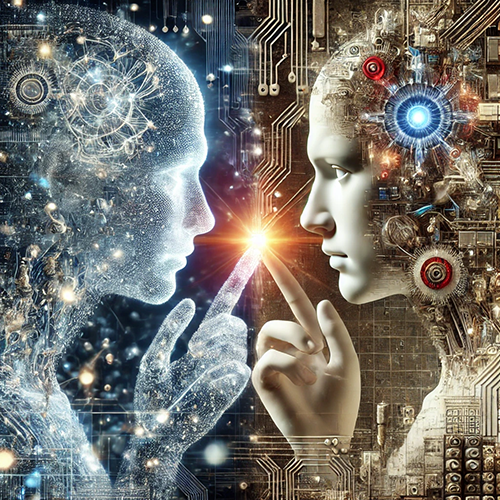
Unmatched Problem-Solving Capabilities
AGI, when attained, should be able to address complex global challenges that have persisted for centuries. Its advanced cognitive abilities should enable it to:
- Analyze Vast Data Sets: AGI can process and analyze massive amounts of data far more quickly and accurately than humans, leading to breakthroughs in fields such as medicine, climate science, and economics.
- Generate Innovative Solutions: By integrating knowledge from various disciplines, AGI can develop innovative solutions to problems like climate change, pandemics, and resource scarcity.
- Optimize Systems: AGI can optimize systems ranging from healthcare to transportation, improving efficiency and reducing waste on a global scale.
Exponential Advancement in Knowledge and Technology
AGI is expected to catalyze exponential growth in scientific and technological progress:
- Accelerated Research: AGI can conduct research at a pace unimaginable for human scientists, rapidly advancing our understanding of the universe, biology, and more.
- Innovation in Technology: AGI-driven innovation will lead to the creation of new technologies and the enhancement of existing ones, driving economic growth and improving quality of life.
- Interdisciplinary Integration: AGI can seamlessly integrate knowledge from diverse fields, leading to holistic advancements that human researchers might miss due to the limitations of siloed disciplines.
The legal industry will also benefit immensely from AGI-driven advancements. Automated contract analysis, predictive policing, and enhanced legal analytics are just a few areas where AGI could significantly enhance efficiency and effectiveness. As I often note on the e-Discovery Team blog, the integration of advanced AI technologies in legal processes is not just beneficial but necessary for the legal profession to keep pace with the rapidly evolving technological landscape.
Enhanced Human Capabilities and Quality of Life
AGI has the potential to significantly enhance human capabilities and overall quality of life:
- Personalized Education: AGI can provide individualized learning experiences, catering to each person’s strengths and weaknesses and ensuring everyone reaches their full potential. In the legal sector, AGI could enhance legal education by providing personalized learning pathways for law students and continuous professional development for practicing lawyers. AGI could tailor legal training programs to address individual learning gaps, ensuring a more competent and knowledgeable legal workforce.
- Advanced Healthcare: AGI can revolutionize healthcare by diagnosing diseases with unprecedented accuracy, personalizing treatments, low-cost medicines, and even predicting health issues before they arise.
- Economic Transformation: AGI can drive economic growth by automating mundane tasks, allowing humans to focus on creative and strategic activities, creating low-cost goods, foods, energy, housing and significantly reducing poverty and inequality.
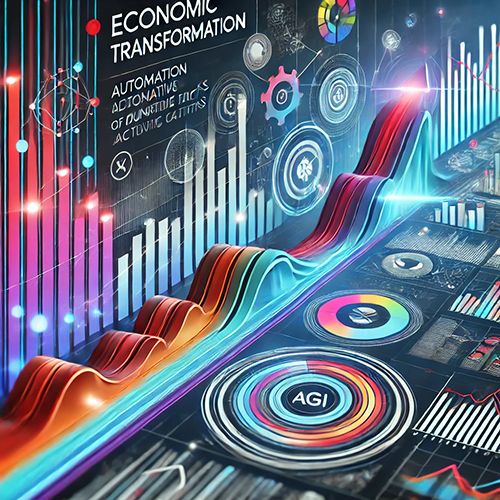
Ethical and Societal Impacts
The ethical implications of AGI are significant, and if managed responsibly, AGI can lead to a more just and equitable society:
- Fair Distribution of Resources: AGI can optimize the distribution of resources, ensuring fair access to essentials like food, water, and healthcare.
- Global Collaboration: AGI can facilitate international cooperation by providing unbiased analysis and recommendations, helping to resolve conflicts and promote peace.
- Ethical Frameworks: With proper governance, AGI can be programmed to uphold ethical standards, ensuring that its actions are aligned with human values and societal good.
Historical Context and Long-term Impact
Comparing AGI to previous landmark inventions highlights its unique potential:
- The Wheel: Revolutionized transportation and industry.
- The Printing Press: Democratized knowledge and spurred the Scientific Revolution. Many believe it is the most important invention of all time, at least before AGI.
- Electricity: Powered modern civilization and technological advancements.
- The Internet: Connected the world and transformed communication and information access.
AGI will encompass the benefits of these inventions and surpass them by offering not just tools but an intelligent entity capable of continuous learning and improvement. That will lead to sustained progress in all fields of knowledge and endeavors.




Image of the top four inventions before AGI. By Ralph Losey using Visual Muse, a narrow AI.
Profound Transformations of the Legal Profession from AGI
The legal profession, once thought to be slow to adopt new technologies, stands to be profoundly transformed by AGI. The potential applications are vast and varied. Many in the legal profession are already catching on and using the narrow AI we have today. The stodgy old times of a slow-moving legal profession are already dissolving, with e-discovery specialists leading the way.
Predictive Analytics
AGI can provide very powerful predictive analytics to forecast case outcomes. This helps lawyers to strategize more effectively. By analyzing historical data, case law, and judge-specific decision patterns, AGI can predict the likelihood of various outcomes in litigation. Our existing level AI is already very proficient at this. With even more powerful AGI, negotiation strategies will improve and lead to ever more judicious uses of litigation resources.
Document Review and E-Discovery
Document review and e-discovery are critical, labor-intensive aspects of modern legal practice. AI technologies like predictive coding have already begun to revolutionize these areas. AGI will take this to the next level, automating these processes with even greater accuracy and speed. Traditional document review involves sifting through vast quantities of documents to identify those relevant to a case, a task that is time-consuming and prone to human error. AGI can automate this process even further, rapidly identifying relevant documents, categorizing them by importance, and flagging potentially privileged information. Moreover, AGI can learn from each case, improving its accuracy and efficiency over time. This automation not only reduces costs but also ensures a more thorough and reliable review process, allowing legal professionals to focus on higher-value tasks.

Legal Research
Legal research is another area poised for further transformation by AGI. Currently, lawyers spend considerable time researching case law, statutes, and legal precedents to support their arguments. AGI can perform comprehensive legal research in seconds, providing lawyers with relevant case law, statutes, and legal precedents, thereby saving time and reducing costs. AGI’s ability to cross-reference vast legal databases instantaneously means that no relevant case or statute is overlooked. Additionally, AGI can present the findings in a concise and understandable manner, complete with contextual analysis and relevance ranking. This allows lawyers to quickly access the most pertinent information, enhancing the quality and precision of their legal arguments. Furthermore, AGI can keep abreast of the latest legal developments, ensuring that the research it provides is always current. The problems that some lawyers now have with AI case hallucinations and sycophantism will be a thing of the past.
Judicial Decision-Making
While controversial, there is potential for AGI to assist in judicial decision-making, ensuring consistency and impartiality in rulings. Circuits in Session: Addendum and Elaboration of the Appellate Court Judge Experiment (e-Discovery Team, 10/26/23); Circuits in Session: Analysis of the Quality of ChatGPT4 as an Appellate Court Judge (e-Discovery Team, 11/1/23). The judiciary’s role is to interpret and apply the law impartially; however, human judges can be influenced by unconscious biases, personal experiences, and external pressures. AGI, devoid of such biases, can assist by providing data-driven insights and suggesting verdicts based on precedent and established legal principles. For example, AGI could analyze past rulings on similar cases to recommend a decision that aligns with legal standards and precedents. This does not mean replacing judges but rather augmenting their decision-making process with a tool that offers a level of consistency and objectivity unattainable by humans alone. Judges could use AGI to double-check their reasoning, ensuring that their rulings are fair and legally sound. BREAKING NEWS: Eleventh Circuit Judge Admits to Using ChatGPT to Help Decide a Case and Urges Other Judges and Lawyers to Follow Suit (e-Discovery Team, 6/3/24).
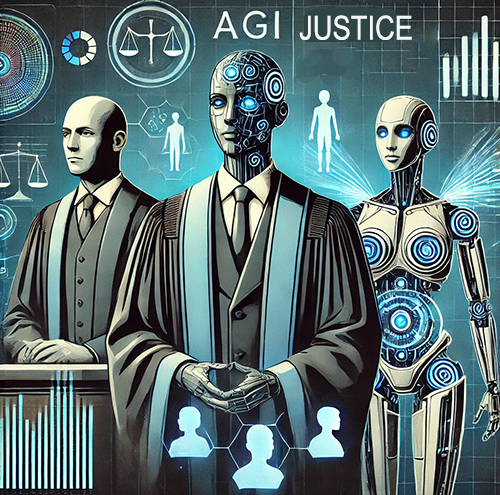
Enhanced Client Interaction
AGI can revolutionize client interactions by providing personalized and immediate responses to client inquiries. Virtual legal assistants powered by AGI can handle initial consultations, answer routine questions, and provide updates on case progress. Of course, human supervision will remain, and some reforms of existing professional ethics will eventually be required. If handled properly, the use of AGI should not only improve client satisfaction but also free up valuable time for lawyers to focus on complex legal matters.
Contract Analysis and Drafting
Contract analysis and drafting are fundamental yet tedious tasks in legal practice. AGI can streamline these processes by quickly analyzing large volumes of contracts, identifying potential risks, and suggesting optimal terms. Furthermore, AGI can draft contracts with high precision, ensuring compliance with relevant laws and minimizing the risk of disputes. This capability can be particularly beneficial in mergers and acquisitions, where timely and accurate contract analysis is crucial.
Legal Compliance and Risk Management
AGI can also play a significant role in legal compliance and risk management. Businesses operate in increasingly complex regulatory environments where staying compliant with laws and regulations is challenging. AGI can monitor regulatory changes, assess their impact on the organization, and suggest necessary adjustments to policies and procedures. Additionally, AGI can identify potential legal risks and recommend proactive measures to mitigate them, thereby safeguarding businesses against costly legal issues.
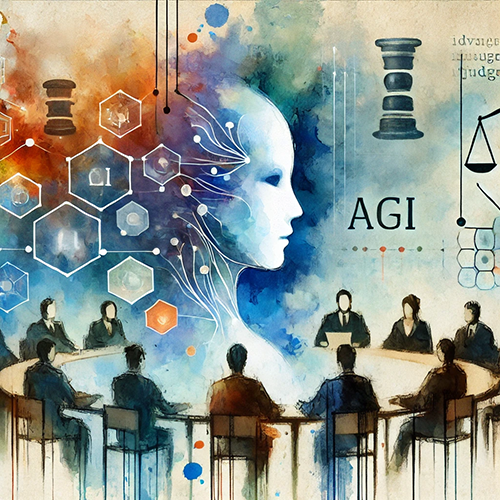
Conclusion
If AGI is attained, it will be the greatest invention of all time due to its:
- Problem-solving capabilities in all fields,
- Potential for exponential advancement in knowledge and technology,
- Enhancement of many human capabilities, and
- Significant ethical and societal impacts.
Computers with AGI level intelligence will be able to integrate and innovate across disciplines. This incredible tool will enable us to progress and improve our quality of life at a previously unimaginable rate. This invention, if ever actualized, will be a transformative force in human history. Properly managed, AGI should not only solve existing problems but also unlock new horizons for humanity, securing its place as the greatest invention of all time.
There will still be dangers and problems with implementation, to be sure, but the AGI itself should be able to help well meaning humans to avoid or mitigate them. See e.g.
Seven Problems of AI: an incomplete list with risk avoidance strategies and help from “The Dude” (e-Discovery Team, 8/6/24); Mustafa Suleyman, The Coming Wave (Crown, 9/5/23).
The legal profession should also benefit significantly by AGI. With proper human guidance, AGI level AI should herald a new era of efficiency, accuracy, and accessibility in legal services. From predictive analytics and document review to legal research and judicial decision-making, AGI will transform every facet of legal practice. The judiciary and law schools will radically change too.
The transformation has already begun by use of the baby AIs we already have, ChatGPT 4 and the like. These changes will accelerate and improve dramatically once AGI is attained. More changes will likely result that are beyond anyone’s current imagination.
It is important to approach AGI with both optimism and caution. Hard work will be required in the coming years to make AGI a reality, and if the AI designers and coders do make an AGI, much more hard work will be required of the users of this invention. We will all have to study and work diligently to safely harness the world’s greatest invention. We will need to find a way to deploy the new found intelligence with wisdom and compassion. Legal professionals trained in AI can play a significant role in this new smart world. Ray Kurzweil predicts AGI by 2029, so we need to learn as much as we can to get ready.
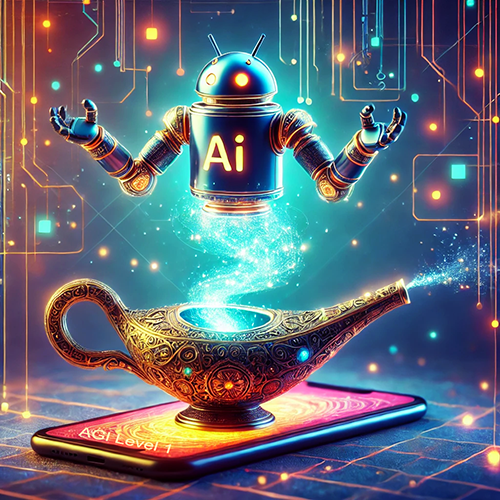
Ralph Losey Copyright 2024 – All Rights Reserved
Assisted by GAI and LLM Technologies per EDRM GAI and LLM Policy.


